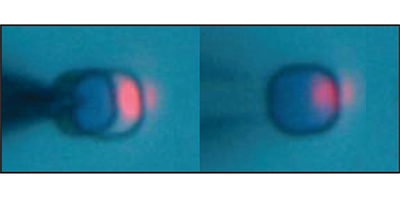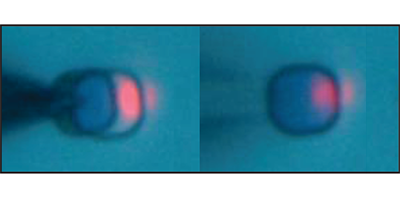Slip Sliding Away
Friction can represent a key obstacle to the miniaturization of devices like the read/write heads in a hard drive. Because they have a high surface-to-volume ratio, nanoscale components are particularly susceptible to friction–and thus wear—as they move in contact with a solid surface. This problem has motivated research on a recently discovered phenomenon called superlubricity: a regime of nearly vanishing friction that kicks in when the two sliding surfaces are “incommensurate,” i.e., when the atoms on one surface have a different spacing than those on the counterface.
Researchers have been able to study superlubricity by using a fine tip to slide small objects against a surface, but technical hurdles limit such observations to small sliding speeds (less than micron/s), far from those of practical relevance. Now, in an article in Physical Review Letters, Jiarui Yang at the Tsinghua University, China, and colleagues report that two micron-sized, incommensurate layers of graphite can slide against each other at a speed that is over six orders of magnitude higher than that seen in previous superlubricity experiments.
The authors used a tungsten tip to move the upper layer of a graphite mesa, misorienting it (thus making it incommensurate) and sliding it laterally. From previous work, they knew the layer tends to retract to its original position, driven like a spring by interlayer van der Waals forces. In the new study, a laser beam was used to monitor the layer’s position as a function of time. The results revealed that sliding of the layers occurred in a low-friction regime of superlubrication, with retracting speeds of up to . – Matteo Rini





